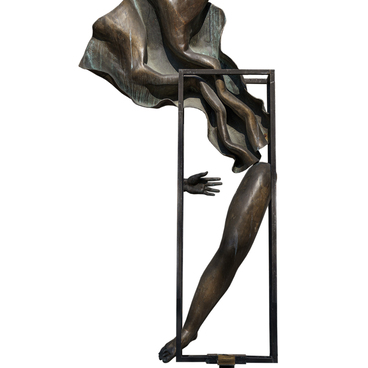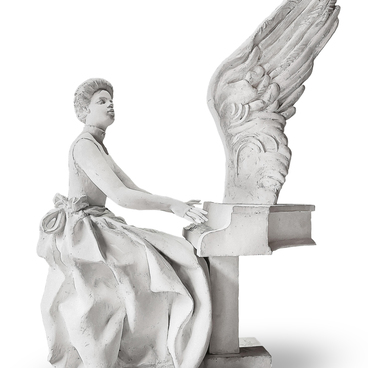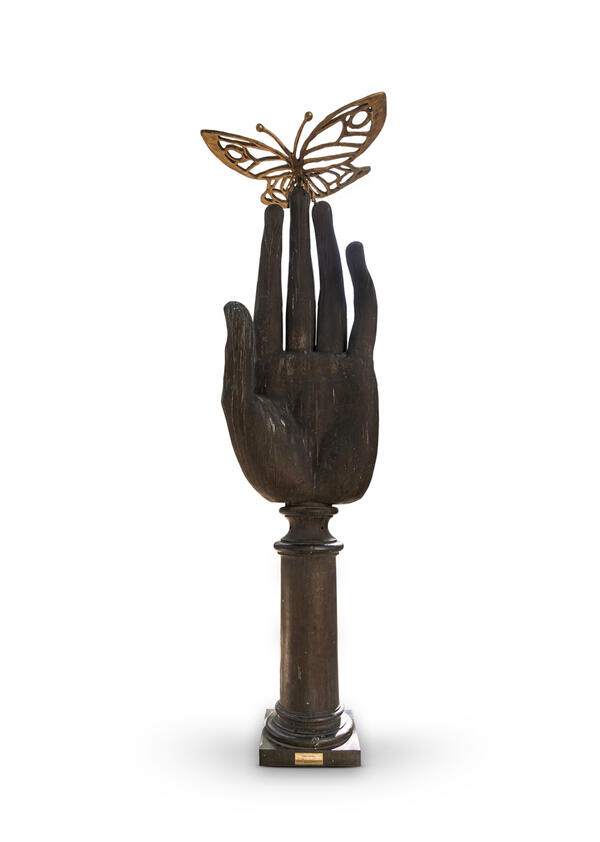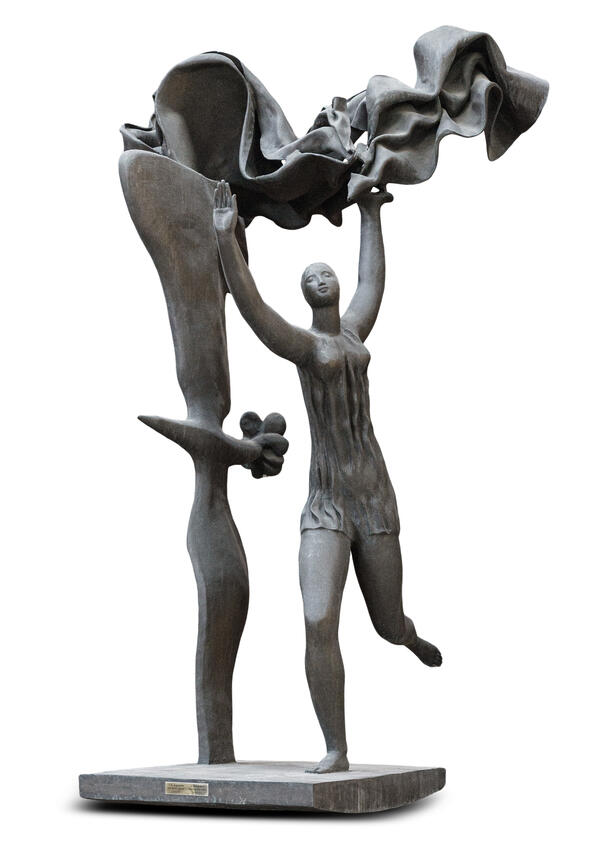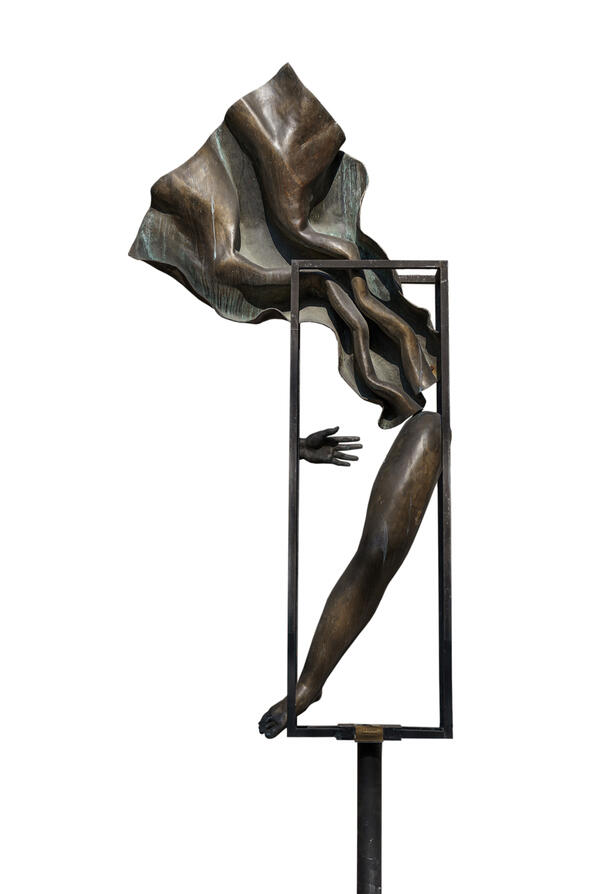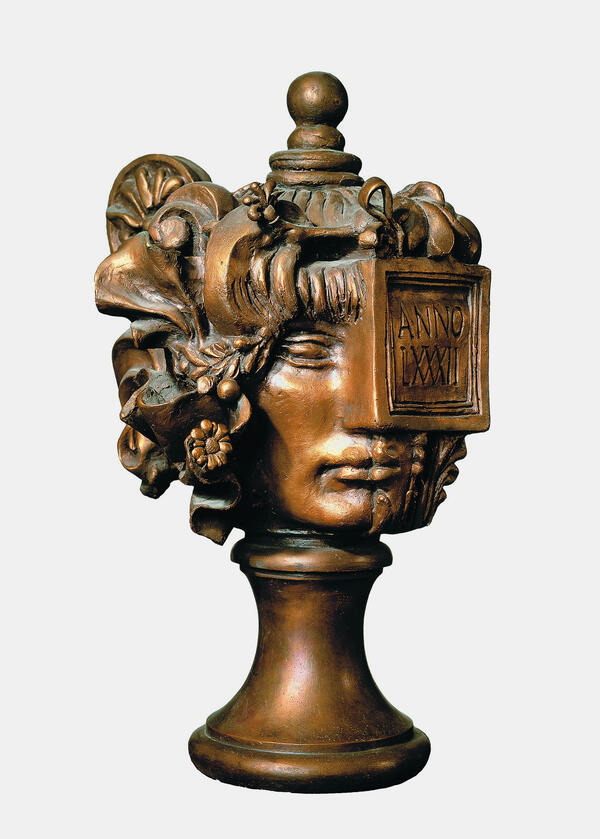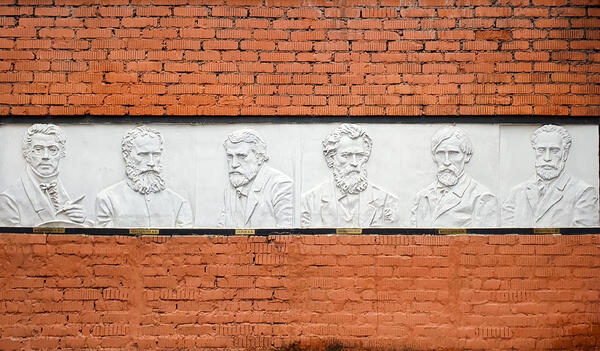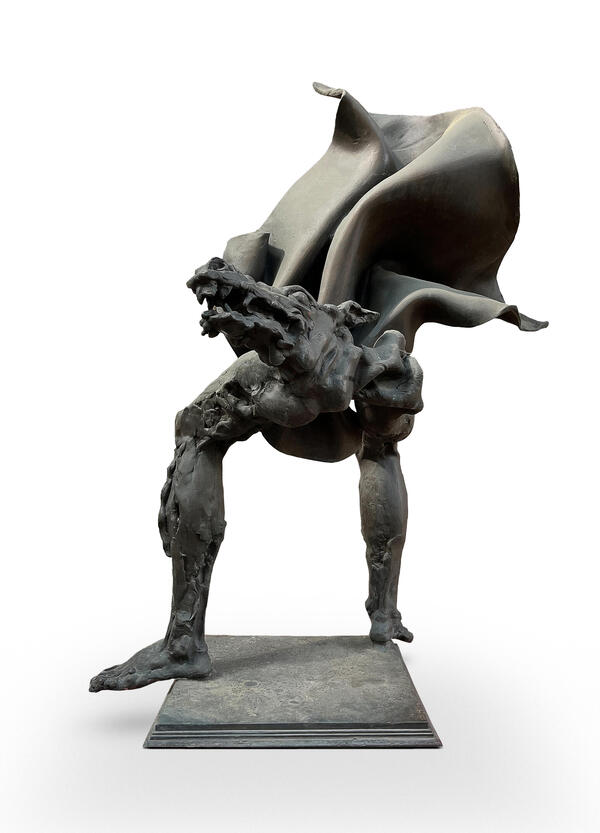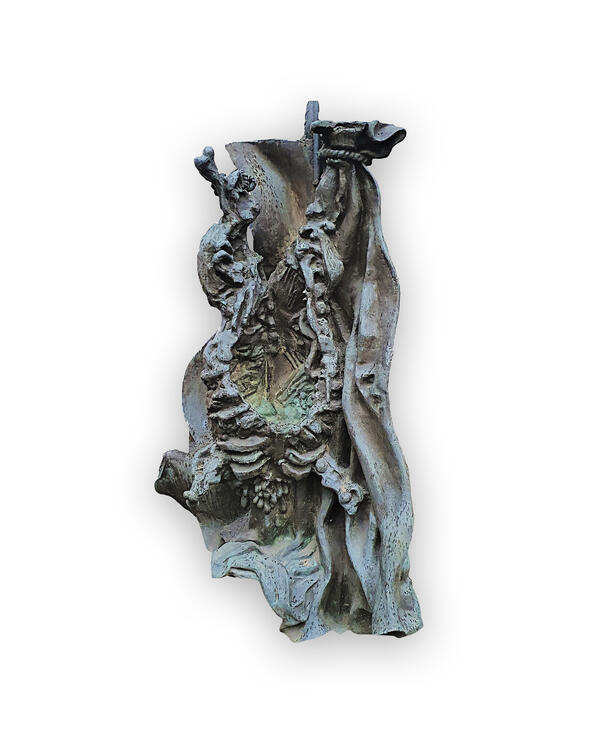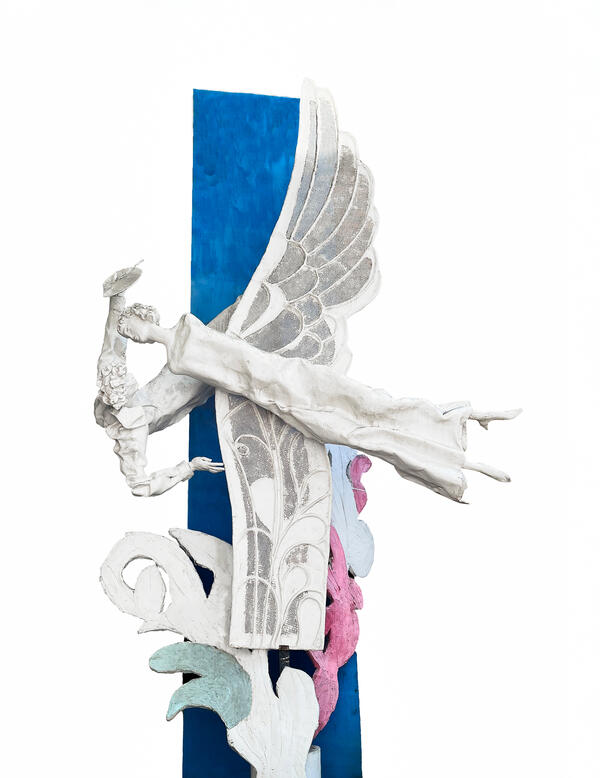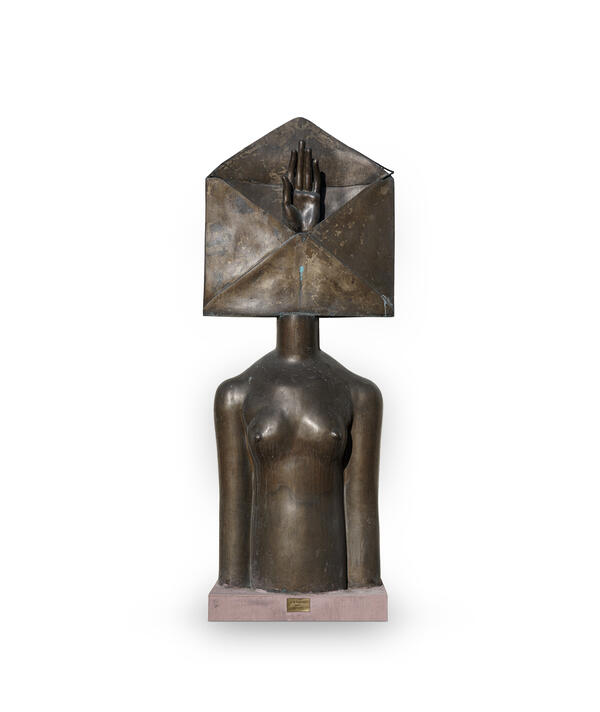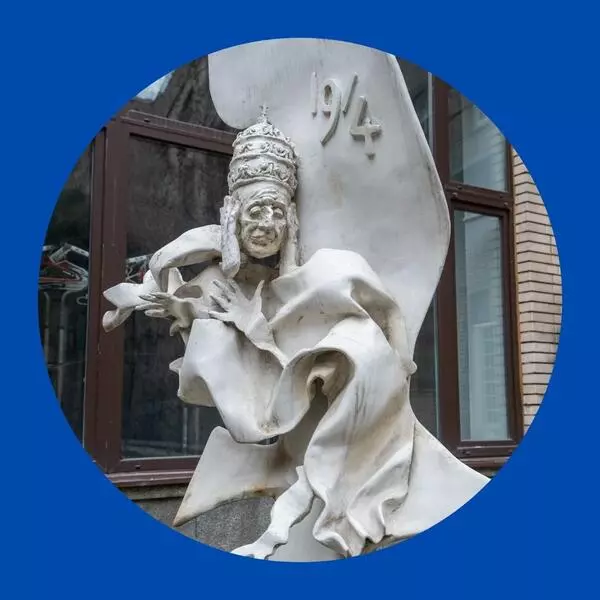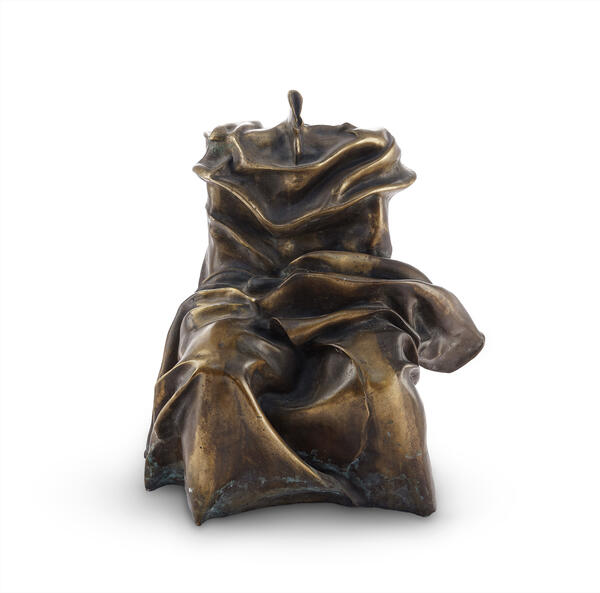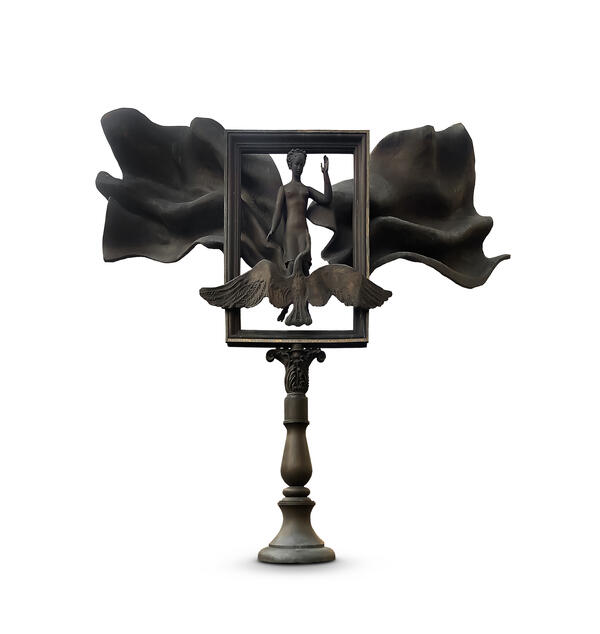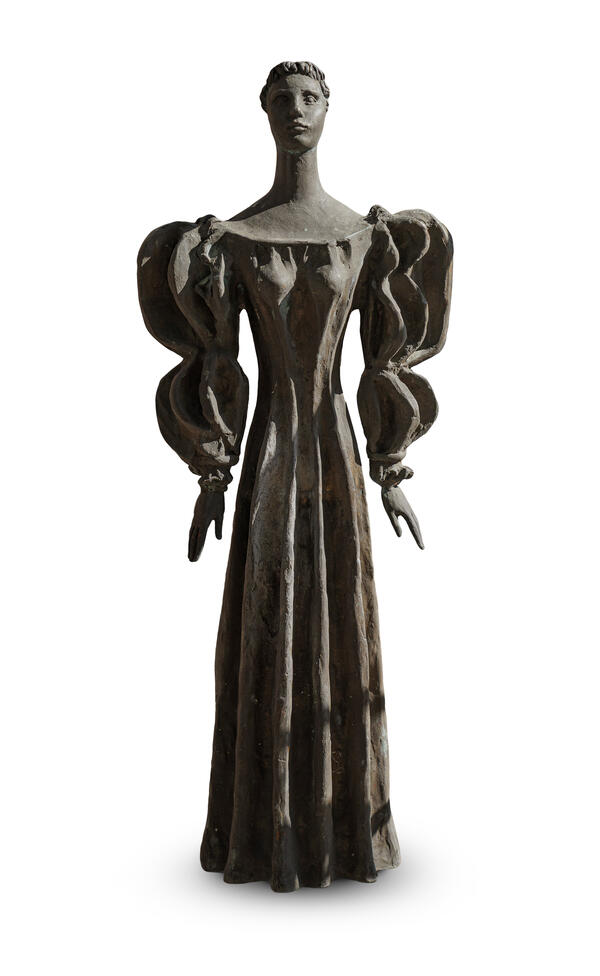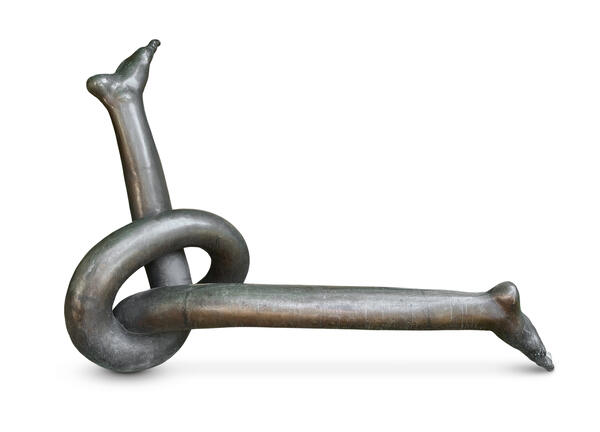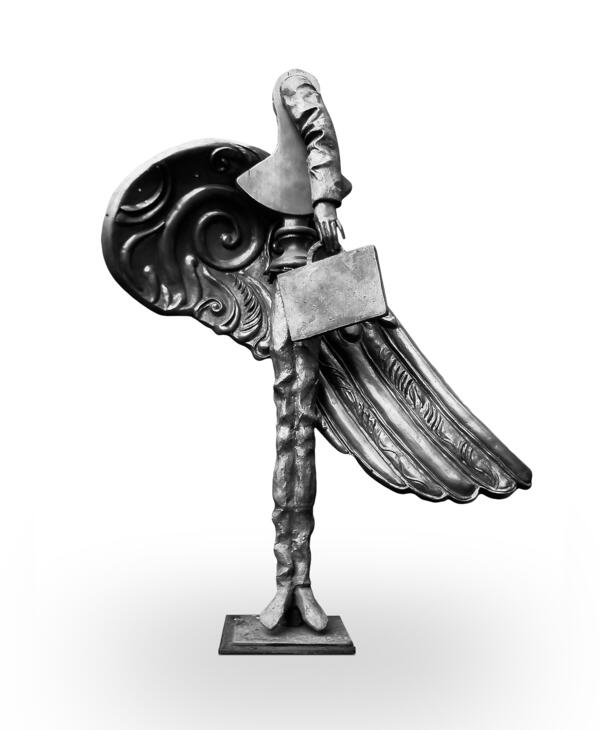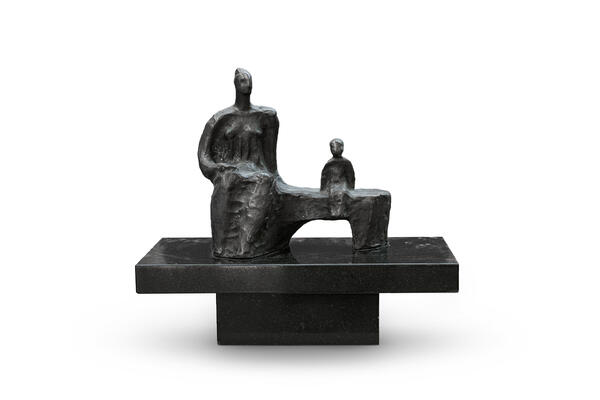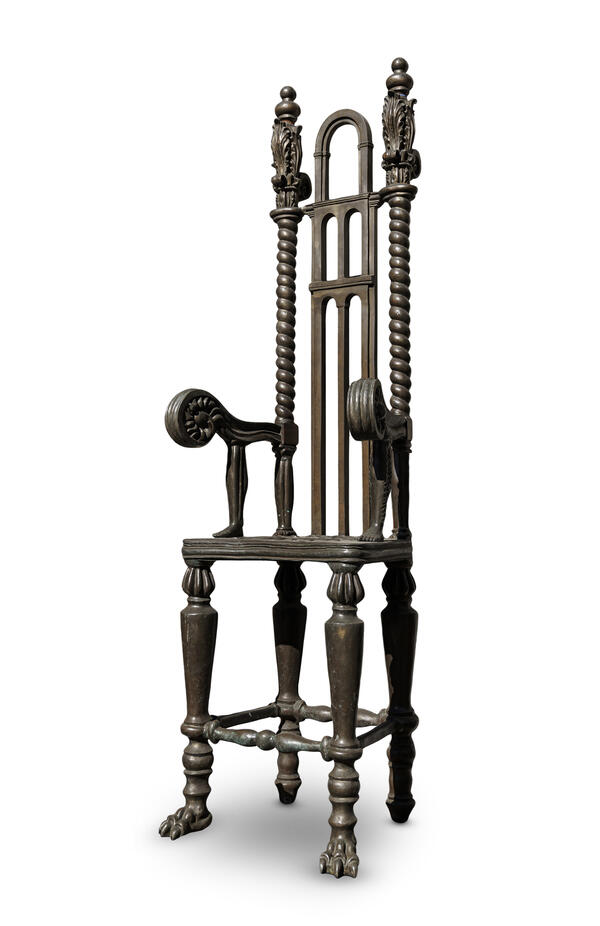The exhibition of the Burganov House features a two-part monumental sculpture “Execution by Shooting. Catastrophe”. This is a tribute to the unknown victims of war, repression, and persecution. Imbued with both heroism and drama, this installation by Alexander Nikolayevich Burganov explores such themes as the triumph of the human spirit over death and obscurity, and the heroic fight against evil and violence.
The complex composition is distinguished by its shapes and dynamics. At its core is a static figure of a standing man — a flat and impersonal silhouette, devoid of any individuality. This is not just an unknown person who has been executed but a symbol of many innocent victims. The sculptor chose not to endow the figure with any distinctive features, because even a collective image could create the impression of a stereotypical heroic character. Reducing the number of details to the bare minimum, the artist depicted an unknown executed person. Absolutely nothing is known about them: their sex, age, nationality, origin, or crime for which this individual was sentenced to death.
This depersonalization creates a sense of multiplicity. In this composition, the sculptor expressed the emotional state of a person in the face of death. An open hand raised as a useless shield against impending death, a clenched fist, and a hand with a finger pointing forward — all these gestures are symbols of resistance and denunciation, and a call for others to stop, remember the past, and prevent such tragedies from happening again. However, the person is no longer there. A shadow and a silhouette are all that remains of them.
There is also a second part of the installation, “Catastrophe”, which is not visible when the sculpture is viewed from the front. But by walking around the piece, one can see a figure of a person falling and screaming. Every bone and muscle is visible, with blood in their wounds. It is as if every particle of this body is screaming in agony and terror in the face of death. This image does not form a contrast with the minimalist calm silhouette in front. Instead, it represents the inner turmoil and final cries of a person before death.

